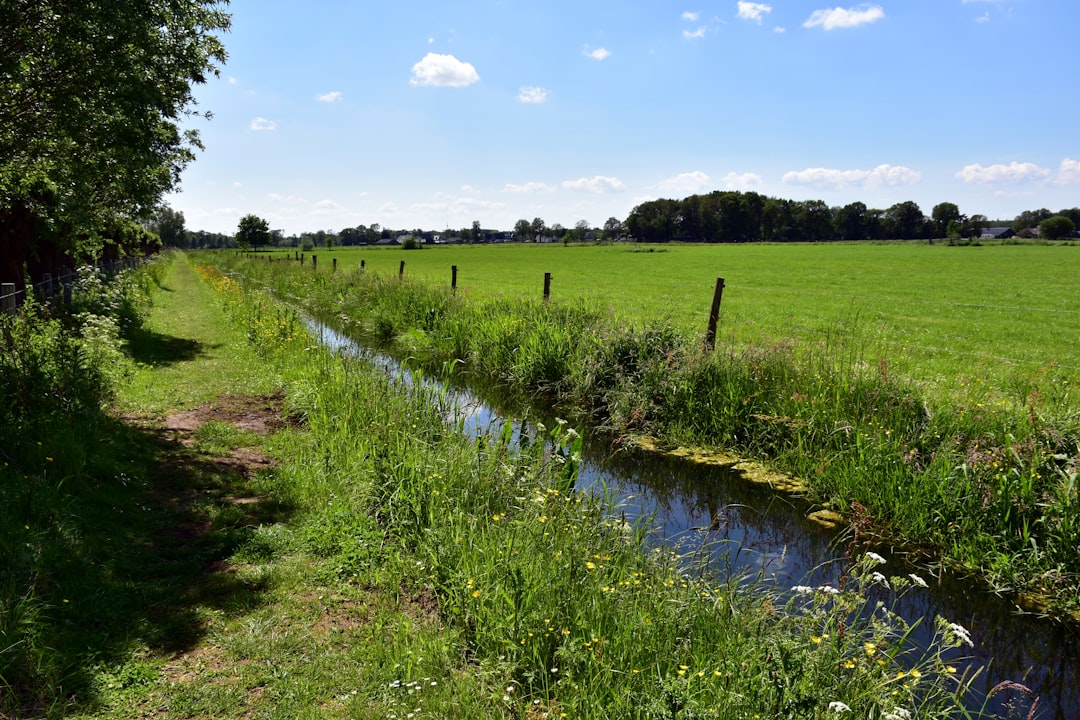Essential for Healthy Crops and Productive Fields
Good drainage is just as important as proper irrigation in sustainable agriculture. While irrigation brings water to the field, drainage ensures it doesn’t overstay its welcome. One key aspect of drainage is surface drainage—the removal of excess water that collects on or near the soil surface, especially after heavy rainfall or over-irrigation.
Surface drainage plays a critical role in preventing waterlogging, protecting crops, and maintaining soil structure. In this blog post, we’ll explore how surface drainage works, its benefits, and practical methods farmers can use to improve water flow on their land.
What Is Surface Drainage?
Surface drainage refers to the movement and removal of water that collects on the soil surface. Unlike subsurface drainage, which deals with water within the soil profile, surface drainage addresses issues caused by poor runoff or flat, compacted land where water tends to accumulate.
If left unchecked, surface water can lead to:
-
Waterlogged soils
-
Crop damage or failure
-
Increased erosion
-
Delayed field operations
-
Soil compaction and structural decline
Signs Your Field May Need Surface Drainage
-
Pools or puddles of water remain long after rainfall
-
Crops appear yellowed, stunted, or stressed in low-lying areas
-
Difficulty accessing fields with machinery after rain
-
Algae or moss growth on soil surface
-
Soil compacts easily or has crusting on top
Benefits of Effective Surface Drainage
1. Healthier Root Systems
Too much surface water can suffocate plant roots by depriving them of oxygen. Effective drainage keeps roots in an aerobic environment where they can grow strong and absorb nutrients properly.
2. Reduced Soil Erosion
Well-designed drainage prevents uncontrolled runoff that washes away topsoil and nutrients, preserving soil health and structure.
3. Improved Field Access
Drained fields dry out faster, making them more accessible for planting, harvesting, and other operations—especially important in tight growing seasons.
4. Prevention of Salinity Build-up
In some regions, poor drainage can contribute to the rise of saline groundwater. Removing surface water helps prevent salt from accumulating near the root zone.
Surface Drainage Techniques
There are several ways to improve surface drainage, depending on your field’s topography, soil type, and cropping system.
1. Land Grading and Leveling
Shaping the land to create a gentle slope allows water to naturally flow away from problem areas. Laser leveling can help achieve uniform slopes with high precision.
-
Ideal for flat lands or areas with slight depressions
-
Enhances uniform irrigation and reduces water pooling
2. Open Ditches and Furrows
Shallow channels or ditches guide water off the field and into drainage outlets. These can be permanent or temporary, depending on crop rotation and field use.
-
Must be carefully designed to avoid creating erosion channels
-
Requires regular maintenance to remove debris and sediment
3. Field Crowning or Ridge and Furrow Systems
Raised beds or ridges elevate the root zone above the standing water, while furrows act as drainage channels.
-
Common in vegetable farming and row crops
-
Helps improve both irrigation efficiency and drainage
4. Grass Waterways
Natural or constructed grassy strips help slow down and absorb surface runoff while directing it safely away from the field.
-
Reduces erosion and sediment transport
-
Provides habitat for beneficial insects and pollinators
5. Check Dams or Silt Traps
Used in sloped areas, these small barriers slow runoff and trap sediment, protecting downstream waterways.
-
Often made of stones, sandbags, or earth
-
Require regular inspection and maintenance
Integrating Surface Drainage with Other Systems
Surface drainage is often the first line of defense in managing water excess. In more complex situations, it can be combined with:
-
Subsurface drainage (tile drains or perforated pipes) for deeper water issues
-
Retention basins to store and reuse excess water
-
Smart water management tools for real-time monitoring
Best Practices for Surface Drainage
-
Plan with the land: Understand natural slopes, soil types, and water flow patterns before modifying fields.
-
Maintain regularly: Clear ditches and structures of debris to ensure free water flow.
-
Monitor water movement: After heavy rains, observe how water behaves—this helps identify weak spots.
-
Balance drainage and conservation: Avoid draining too aggressively; you want to remove excess water, not all moisture.
Conclusion
Surface drainage might not get the same attention as irrigation or fertilization, but it’s a fundamental aspect of productive farming. Without it, even the best irrigation plan can fail, and your crops may suffer from stress, disease, or stunted growth.
By implementing smart surface drainage practices—whether simple grading or structured ditches—you can protect your crops, your soil, and your investment. In the long run, a well-drained field is a healthy, resilient, and more profitable one.
Have you implemented surface drainage on your farm? Share your tips or challenges in the comments!

Comments
No comments yet. Be the first to comment!
You must be logged in to comment. Login